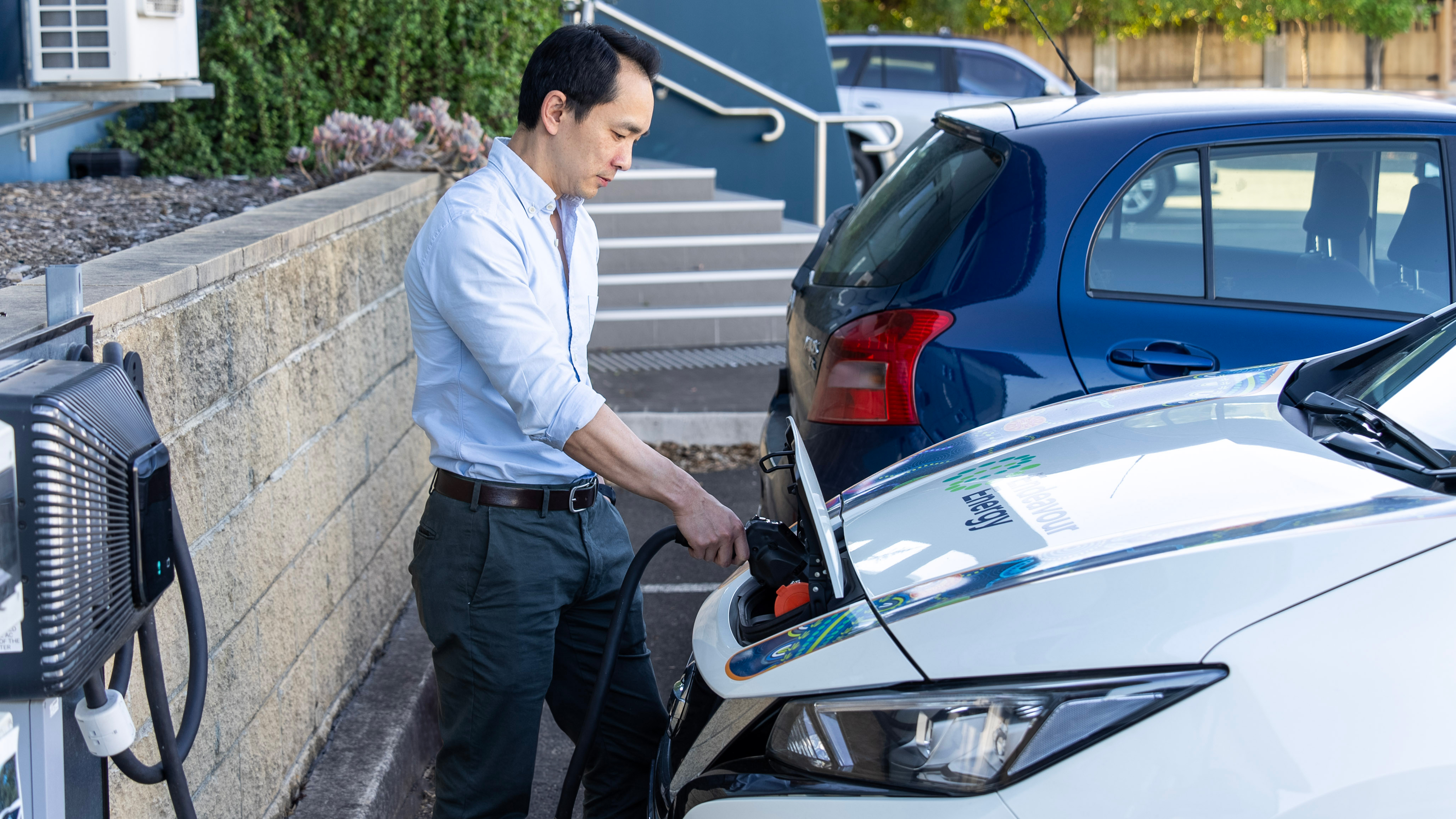EV charging trial
Could your next car also help to power your home, keep downward pressure on power bills and help stabilise the electricity grid?
Electric vehicles have the potential to transform our energy system by significantly increasing the amount of distributed energy storage connected to the electricity network.
As our electricity grid becomes increasingly powered by renewable energy, more needs to be done to store excess energy for use when the sun doesn’t shine, or the wind isn’t blowing.
This is where electric vehicles (EVs) come in. Australians are buying EVs in ever growing numbers and we expect around 300,000 connected to households on the Endeavour Energy network by 2030.
As an EV’s battery is typically four to six times larger than a residential battery, the Australian Renewable Energy Agency forecasts EV fleet battery capacity to surpass all other forms of energy storage in the National Electricity Market by 2030.
This represents one of the largest enablers of Australia’s energy transition as technology continues to evolve and the adoption of EVs increases.
EV charging trial
Endeavour Energy is the first network in NSW to trial two way charging from an EV to power one of our sites at Glendenning using a Wallbox Quasar two-way charger and Nissan Leaf EV.
This latest trial uses a two-way charger so the EV can discharge energy from its battery to power a building/home or potentially export energy to the grid, enabling energy to flow where it’s needed most.
 Our trial is setting the groundwork for the future installation of two-way EV chargers by customers to save them money on their power bill or for use as backup power during an outage.
Our trial is setting the groundwork for the future installation of two-way EV chargers by customers to save them money on their power bill or for use as backup power during an outage.
The trial is designed to ensure the operational use of the vehicle is not affected while using the benefits of two-way charging technology. When the car was not being driven, the battery is being discharged at peak times and charged at off-peak times during the day and late evenings.
Typical daily EV charging schedule during trial
| Use | Time |
|---|---|
| EV used as a fleet car or charged when plugged in | 9am to 5pm |
| Energy from EV powers building during peak hours | 5pm to 8pm |
| EV charged during off-peak hours | 1am to 8am |
Below we’ve outlined how a residential customer with a solar system and EV could use a two-way charger.
While two-way chargers are not yet approved for customer use in NSW, our trial is giving us the know how to give customers this choice in future. The benefits from two-way charging include:
- savings on your electricity bill by using your EV to reduce your electricity usage from the network by charging using solar or off-peak energy and discharging to meet your home needs at times of peak demand.
- reducing future grid investment from the future adoption of many EVs by customers across the network and the flexibility this provides. If EV charging is managed effectively, it can be used to to stabilise the network and keep downward pressure on everyone’s electricity bills.
- supplying backup power in case of power outages. For example, an average EV with a 60-kilowatt hour battery has enough energy to power an average Australian household for up to 3 days.
- accelerating the decarbonisation of the grid. For example, daytime EV charging can soak excess solar on the grid for use in the evenings when energy demand is high and renewable generation is low.